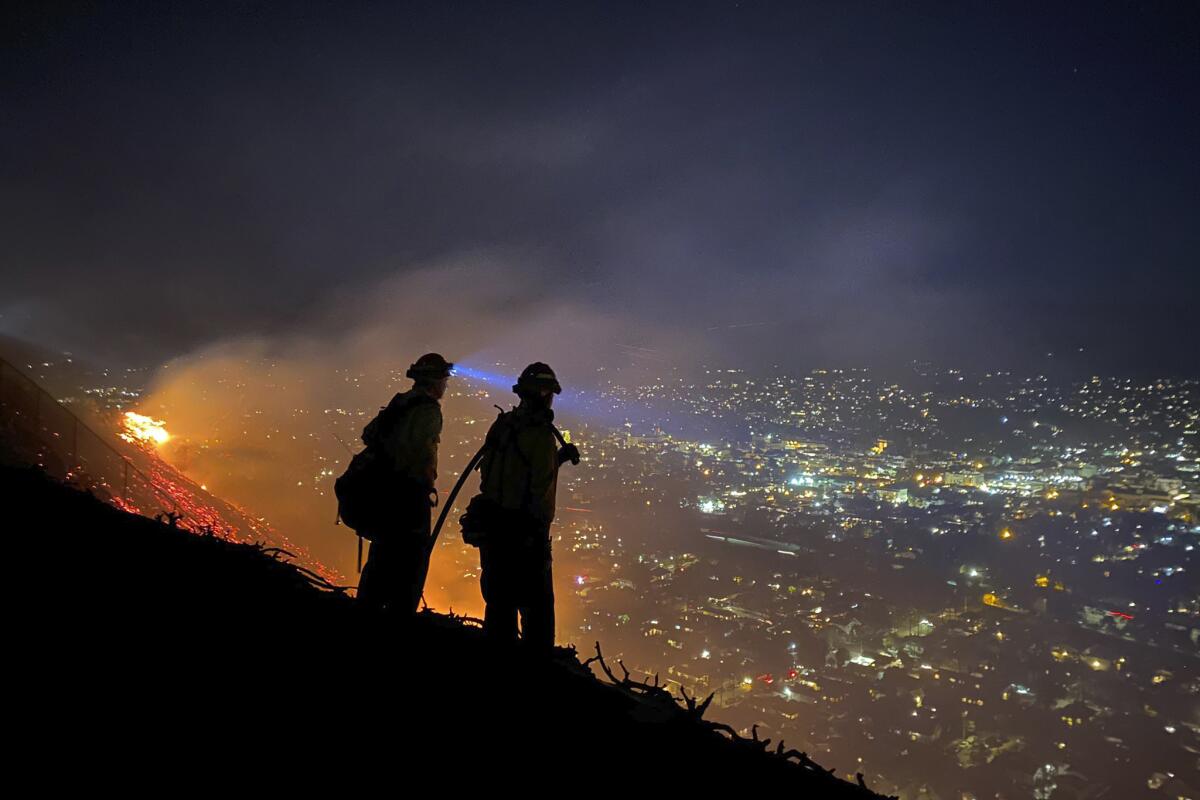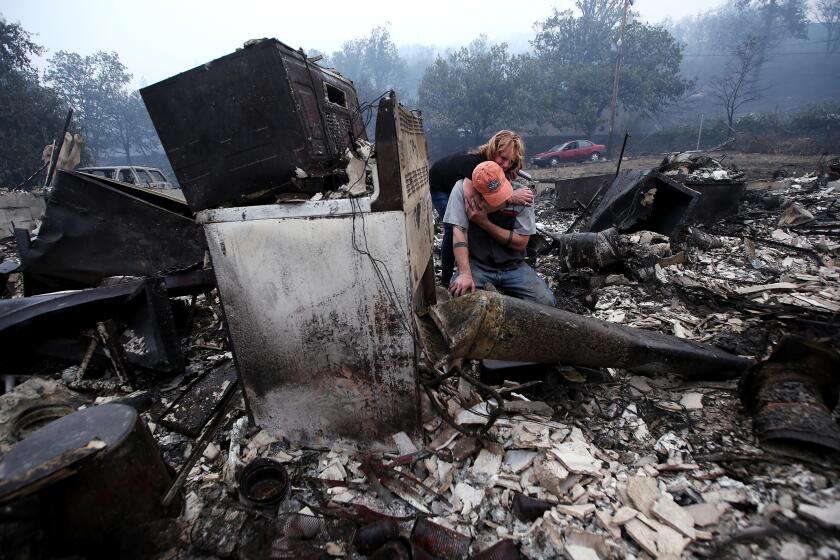State regulators identify wildfire neighborhoods targeted for insurance relief

- Share via
California regulators Wednesday disclosed which areas of the state insurers will have to cover if they want to take advantage of financial incentives intended to resolve the homeowners’ insurance crisis.
In Los Angeles County, those areas include ZIP Codes in the Santa Monica Mountains, the San Gabriel Mountains and parts of the Santa Clarita Valley, according to draft regulations released by the Department of Insurance.
Major insurers have pulled back from California’s homeowners market, citing wildfires, inflation and other challenges. But there are steps at-risk homeowners can take now to secure coverage and at lower prices.
Last fall, amid the pullback of insurers from wildfire neighborhoods, state Insurance Commissioner Ricardo Lara announced his Sustainable Insurance Strategy. It was the biggest overhaul of industry regulations since the 1988 passage of Proposition 103, which gave an elected insurance commissioner the authority to review and reject requests for rate hikes by insurers offering homeowners, auto and other lines of coverage. The new regulations are expected to be in place by the end of the year.
“We are well on our way to enacting the state’s largest insurance reform,” Lara said Wednesday. “We are being driven by data and by the meetings we have held with thousands of Californians across the state.”
Elements of the reform are predicated on a deal he reached with the industry that would allow insurers to include in their premiums the cost of reinsurance they buy to protect themselves from disasters — and to use computer models that project future claims risks, a concern due to massive wildfires caused by drought and climate change. Currently, historical claims data are used in preparing rate hike requests.
That agreement requires large insurers to provide coverage in wildfire risk areas that is equivalent to 85% of their statewide market share. That means, theoretically, if an insurer has a 20% market share statewide, it would have to insure 17 out of 100 homes in such neighborhoods.
Smaller insurers are also targeted by the regulations, but instead of having to increase market share in distressed areas by the 85% metric, they would have to increase the number of policies they write by 5%. All companies also would have to increase their commercial policies in such areas by 5%.
The regulations released Wednesday detail how that goal would be achieved, and take a three-part “hybrid” approach that aims to maximize coverage and account for the state’s geographic diversity that includes mountainous rural areas, coastal zones and suburban neighborhoods.
One set of regulations would apply the 85% threshold to entire counties if 20% or more of properties are in “high” risk areas, as defined by maps created by the Department of Forestry and Fire Protection.
Another set would apply the threshold to “high” and “very high” fire-risk ZIP Codes if 15% or more of policyholders are being covered by the state FAIR Plan, an insurer of last resort that offers policies with minimum benefits. ZIP Codes would also be included if it is found that coverage is unaffordable based on a median-income or premium-cost calculation. The idea is to protect those with limited or fixed incomes.
The regulations also aim to capture high fire-risk neighborhoods sprinkled in nearly every county that are not captured by the other rules.
The department plans to review coverage by insurers that seek to include the cost of reinsurance and use the new computer models to ensure they are writing insurance in distressed areas. Those that are not could face rate reductions and having to rebate premiums.
“Insurance companies need to commit to writing more policies, and my department will need to verify those commitments to hold companies accountable,” Lara said.
Carmen Balber, executive director of Consumer Watchdog, a Los Angeles consumer advocacy group, said in a statement that the draft regulations give insurers too much time to meet the coverage targets and provide affordable insurance, while giving regulators too much leeway to provide exceptions.
“Insurance Commissioner Lara’s plan gives insurance companies two years to comply but they can start to charge more immediately. After two years, insurance companies can say they can’t meet their goals and the commissioner can just move the goal posts. This was the one consumer benefit in Lara’s proposal but the exceptions swallow the rule,” she said.
Rex Frazier, president of the Personal Insurance Federation of California, a trade group of property and casualty insurers, welcomed the move.
“We are encouraged to see continued progress on the commissioner’s Sustainable Insurance Strategy. This proposal is complex, with many trade-offs, including insurer commitments that no other state requires. However, we remain committed to working with all stakeholders to increase insurance availability and restore the health of the insurance market,” he said in written remarks.
After the announcement, Gov. Gavin Newsom, who has thrown his support behind Lara’s reform plan, said in a written statement that the regulations were “another critical action to help fix California’s decades-old insurance crisis.”
The department issued on Wednesday a state map and a list of ZIP Codes affected by the proposed regulations. The department will hold a June 26 hearing to take testimony from insurers, consumer advocates, policyholders and others.
The ZIP Codes include neighborhoods in Malibu, Beverly Hills, Topanga, Bel-Air, Beverly Glen, Duarte, Castaic and Catalina Island.
More to Read
Inside the business of entertainment
The Wide Shot brings you news, analysis and insights on everything from streaming wars to production — and what it all means for the future.
You may occasionally receive promotional content from the Los Angeles Times.












